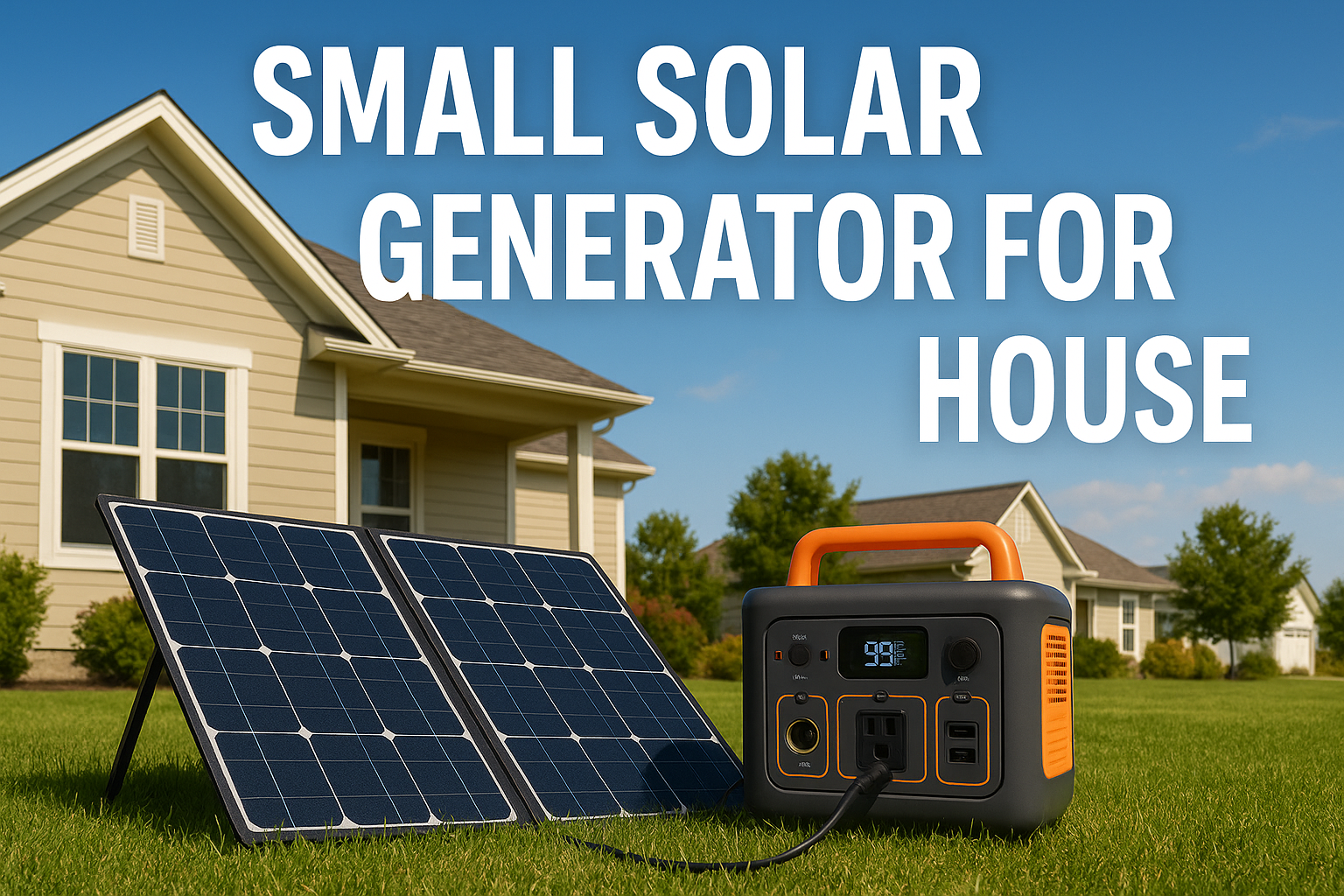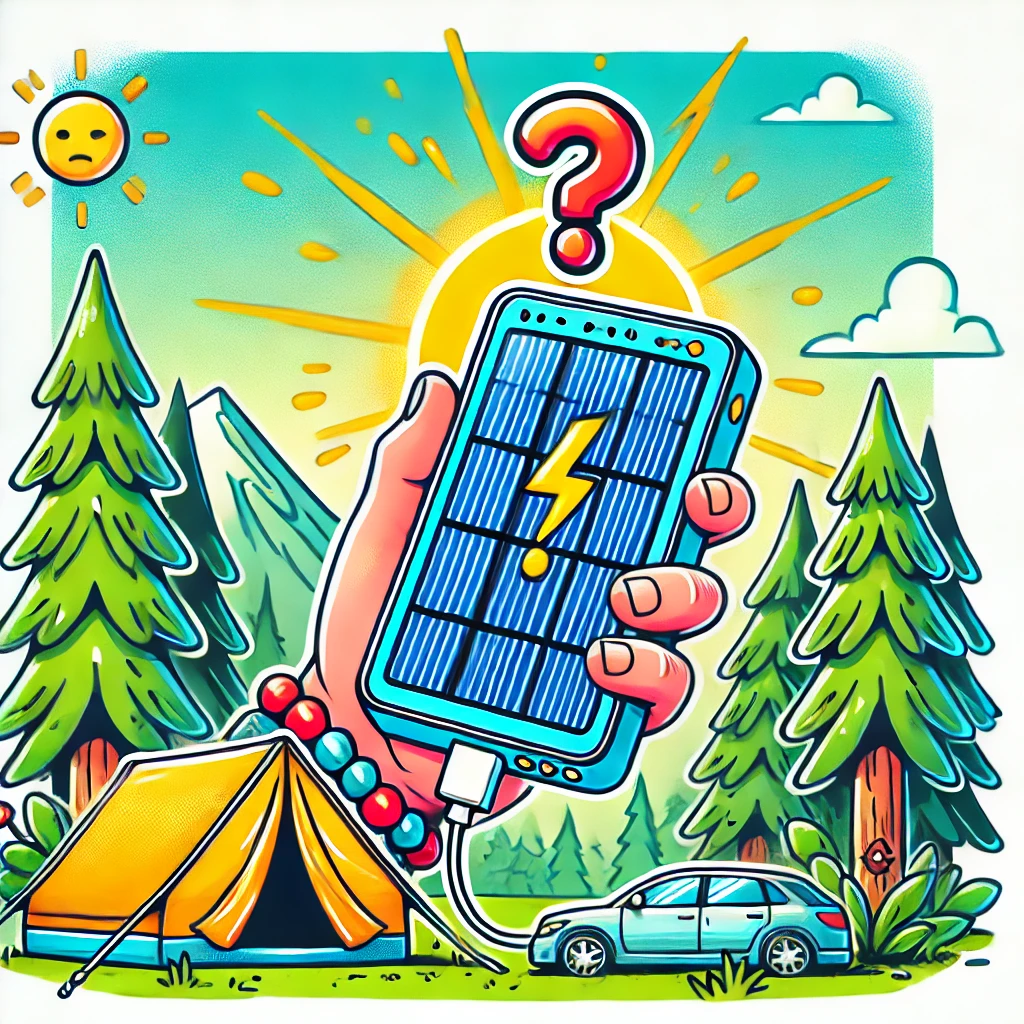Introduction
Energy security is becoming more important than ever. From rising utility bills to frequent blackouts, households everywhere are searching for affordable, reliable, and eco-friendly backup power solutions. For many, the answer is a small solar generator designed for house use.
Unlike noisy gas generators that require fuel, oil changes, and outdoor ventilation, solar generators provide quiet, emission-free electricity from the sun. They are compact, portable, and safe to use indoors, making them a perfect choice for powering essential household devices.
In this comprehensive guide, we’ll cover everything you need to know about small solar generators for homes—how they work, their components, the pros and cons, costs, buying tips, and how they compare to traditional gas generators.
What Is a Small Solar Generator for House Use?
A small solar generator is essentially a portable power station powered by solar panels. It includes a rechargeable battery, inverter, charge controller, and multiple outlets. Instead of burning fuel, it stores energy from the sun and converts it into usable electricity for your devices and small appliances.
These generators are best suited for essential household tasks such as:
- Charging phones, laptops, and tablets.
- Running Wi-Fi routers, LED lights, and fans.
- Powering CPAP machines or small medical equipment.
- Operating small refrigerators or freezers during outages.
While they won’t run your entire home, they can be a lifesaver during emergencies and a convenient source of renewable energy for daily use.
How Does a Small Solar Generator Work?
The process is simple but highly effective:
- Solar Energy Collection – Solar panels absorb sunlight and convert it into direct current (DC).
- Battery Storage – This DC electricity charges the generator’s built-in battery. Modern generators typically use lithium-ion or LiFePO4 batteries for efficiency and longevity.
- Conversion to AC Power – An inverter converts stored DC electricity into alternating current (AC), which most home appliances use.
- Power Delivery – You can then plug devices into the generator’s AC outlets, USB ports, or DC outlets to access power.
Many small solar generators also allow AC wall charging or car charging, so you’re not limited to solar panels alone.
Components of a Small Solar Generator
Every small solar generator is made up of five essential parts:
1. Solar Panels
Solar panels capture energy from the sun. Portable versions fold for easy carrying, while rigid panels are more efficient but less mobile.
2. Battery
The battery stores electricity for later use.
- 300–500Wh capacity → Lights, phones, laptops.
- 1,000–1,500Wh capacity → Small fridge, fan, TV, router.
3. Inverter
Converts DC into AC so you can run appliances. Smaller units have inverters rated 300–1,500W.
4. Charge Controller
Regulates the flow of energy, preventing overcharging or battery damage.
5. Output Ports
Most small solar generators include:
- AC outlets for home appliances.
- USB & USB-C ports for electronics.
- 12V car-style ports for accessories.
Advantages of Small Solar Generators for Homes
Why are more households choosing solar-powered generators?
1. Clean Energy
They use renewable sunlight, producing zero emissions.
2. Silent Operation
Unlike gas models, solar generators run quietly—ideal for indoor use.
3. Safe Indoors
No carbon monoxide risk, so you can safely operate them inside.
4. Low Maintenance
With no moving parts, they require almost no maintenance.
5. Portability
Lightweight and compact, you can move them around the house or even take them camping.
6. Cost Savings Over Time
While initial prices are higher, solar energy is free forever—no fuel purchases required.
Disadvantages of Small Solar Generators
Of course, no system is perfect. Here are some limitations:
- High Initial Cost – A small unit may cost more upfront than a gas generator of similar size.
- Limited Power – They can’t run central air conditioning, electric ovens, or heavy-duty appliances.
- Sunlight Dependence – Charging is slower on cloudy days or at night unless paired with wall charging.
- Battery Lifespan – Even lithium batteries degrade over time (though they last 5–10 years).
- Recharge Time – Even with strong panels, full recharging can take hours.
Real-Life Uses in Houses
A small solar generator is versatile in many household situations:
- Emergency Backup – Keep your fridge, router, lights, and medical devices running during blackouts.
- Everyday Power Savings – Use solar to charge electronics and reduce your electricity bill.
- Camping & Outdoor Living – Take portable power anywhere for small appliances, cooking gear, and lighting.
- RV or Tiny Home – Pair with panels to create a self-sufficient microgrid.
- Medical Needs – Many rely on solar generators to run CPAP machines overnight safely.
Cost of Small Solar Generators
Prices vary widely depending on capacity and features:
- Entry-level units (300–500Wh) → $250–$600
- Mid-range (1,000–1,500Wh) → $800–$1,500
- High-capacity (2,000Wh+) → $1,800–$3,000
Solar panels are often sold separately and cost about $150–$400 per 100W.
Though the upfront cost is higher, you save money by avoiding fuel purchases, oil changes, and ongoing maintenance.
Solar Generator vs. Gas Generator
Here’s how small solar generators compare with traditional fuel-powered models:
| Feature | Solar Generator | Gas Generator |
|---|---|---|
| Fuel Source | Sunlight (free) | Gasoline/Diesel |
| Emissions | Zero | High (CO₂, fumes) |
| Noise | Silent | Loud (60–90 dB) |
| Indoor Use | Safe | Unsafe (carbon monoxide) |
| Maintenance | Minimal | Frequent (oil, filters) |
| Running Time | Limited by battery | Unlimited with fuel |
| Upfront Cost | Higher | Lower |
| Long-Term Cost | Very Low | High (fuel + maintenance) |
Verdict:
- If you need clean, safe, and portable power → choose solar.
- If you need unlimited power for heavy appliances → gas may still be better.
Tips for Choosing the Right Small Solar Generator
Before buying, consider:
- Your Power Needs – List devices you want to power and check their wattage.
- Battery Size – Pick a generator that offers at least 20–30% more storage than your estimated daily use.
- Inverter Rating – Ensure the inverter can handle your highest-wattage appliance.
- Port Options – Look for multiple AC outlets, USB-C ports, and DC outlets.
- Expandability – Some models let you add batteries or panels to grow your system.
- Brand Reputation – Stick with trusted brands like Jackery, EcoFlow, Bluetti, and Goal Zero.
The Future of Small Solar Generators
As technology advances, solar generators are becoming cheaper, lighter, and more powerful. Innovations like:
- Bifacial solar panels (capture sunlight on both sides).
- Longer-lasting LiFePO4 batteries.
- App-based monitoring systems.
- Integration with home solar + battery setups.
These improvements are making small solar generators an even better option for households looking for energy independence.
FAQs About Small Solar Generators
Q: Can a small solar generator run my fridge?
Yes, but only smaller refrigerators. A mid-sized (1,000–1,500Wh) generator can usually power a fridge for 12–24 hours.
Q: Can I use it overnight?
Yes, as long as it’s fully charged during the day, you can run lights, routers, or CPAP machines through the night.
Q: How long do they last?
Most lithium batteries last 8–12 years or about 2,000+ cycles before dropping to 80% capacity.
Q: Do I need panels, or can I charge it from the wall?
You can use wall charging, but panels are essential for full off-grid use.
Q: Are they worth the investment?
Yes—especially if you want clean, quiet, low-maintenance backup power.
Conclusion
A small solar generator for house use is one of the smartest energy investments you can make in 2025. It won’t power every appliance, but it will keep your essentials running safely, quietly, and affordably during blackouts or daily use.
- ✅ Perfect for lights, routers, phones, laptops, fans, and small fridges.
- ✅ Clean, renewable, and maintenance-free.
- ✅ Safe to use indoors without noise or fumes.
While the initial cost may seem steep, the long-term benefits—free solar power, energy security, and peace of mind—make it worthwhile. For homeowners seeking a reliable, eco-friendly backup solution, a small solar generator is a powerful step toward independence.



